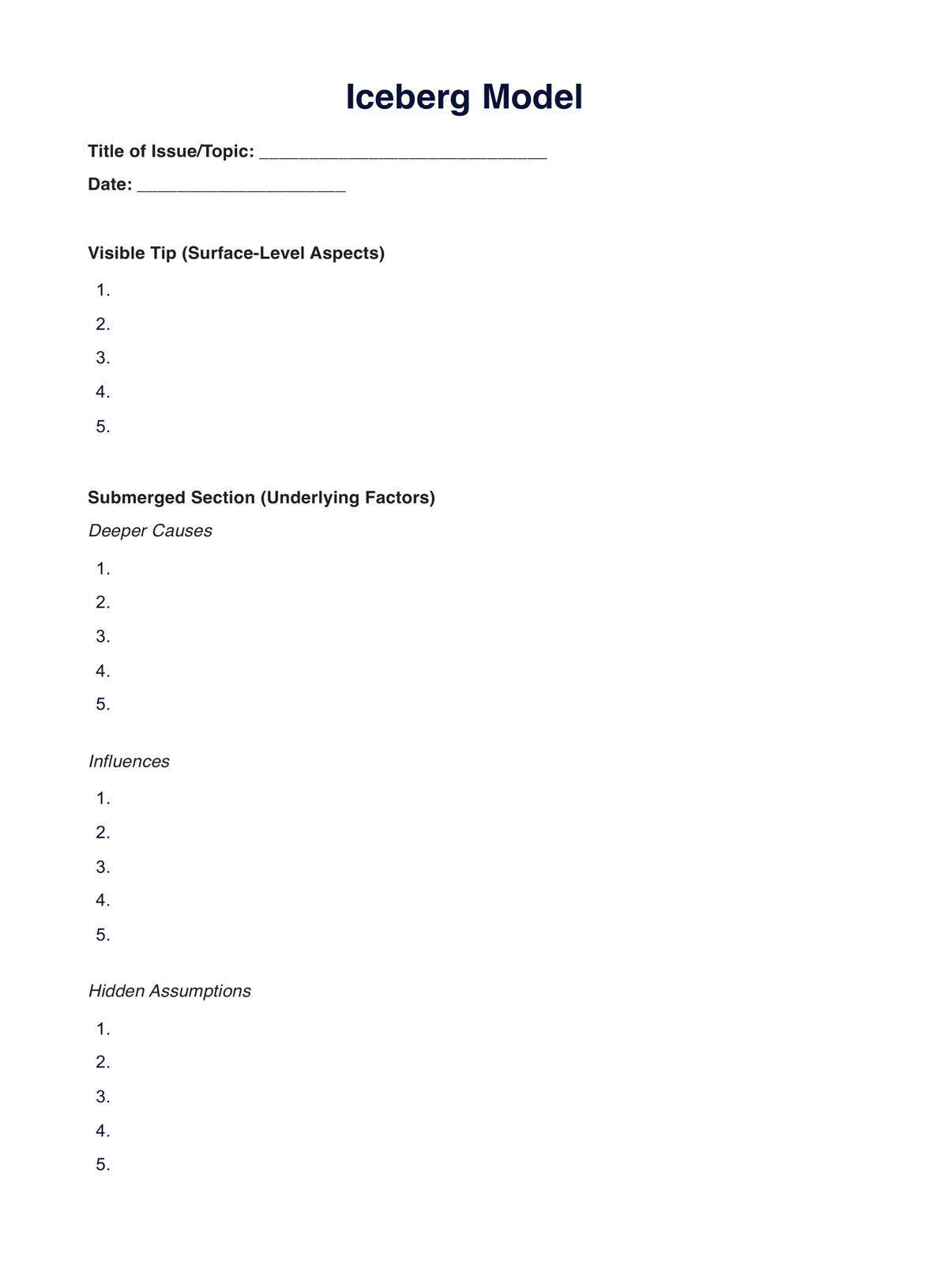To create an Iceberg Template, divide it into two main sections: the tip and the submerged part. The smaller and visible tip represents a topic's surface-level or immediately obvious aspects. Below it, the larger submerged section illustrates deeper, underlying factors or causes that aren't immediately visible.
This template can be adapted to various topics by identifying the visible outcomes or issues (the tip) and then exploring the hidden causes or influences (the submerged part). The template should be clear and spacious enough to allow detailed descriptions in both sections.












